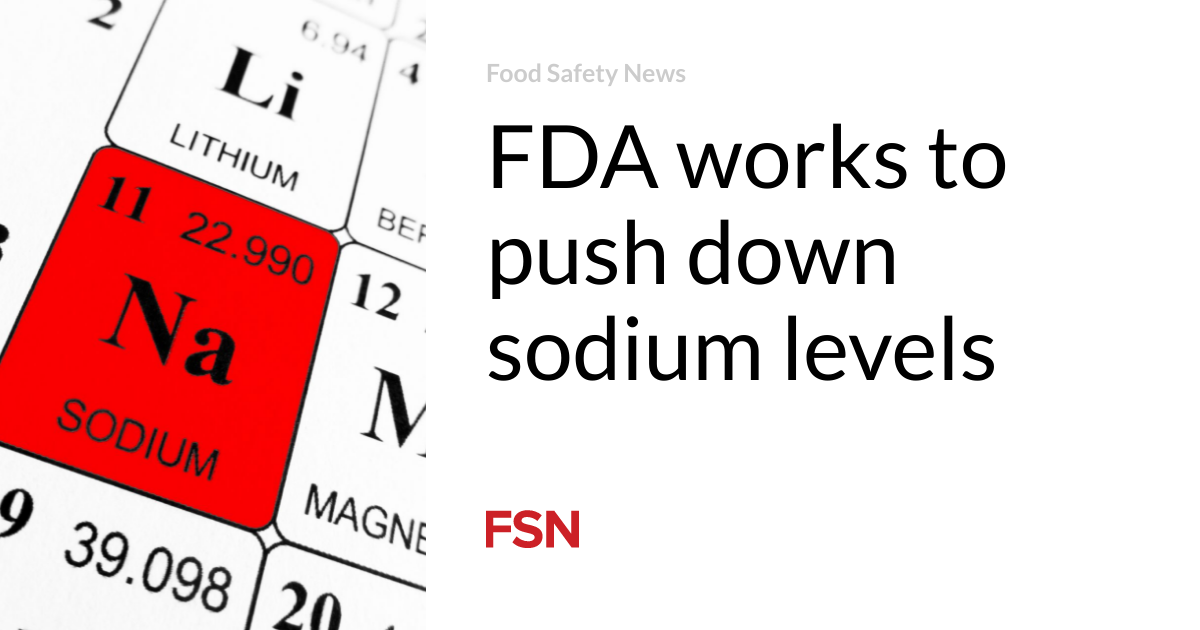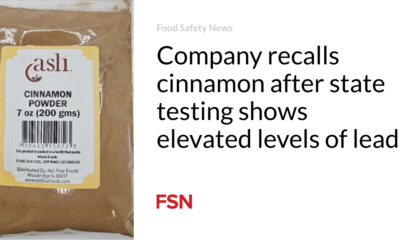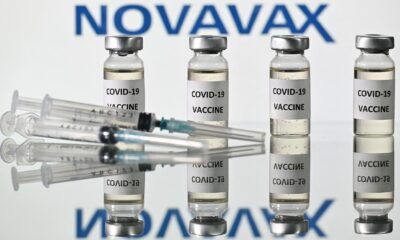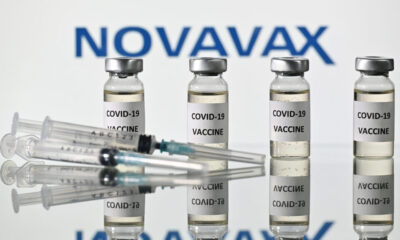Food
FDA is working to lower sodium levels

Sodium is not a pathogen, but it is also deadly. Just ask the World Health Organization (WHO), which reports that two million of eight million deaths from poor diet are due to high sodium intake. According to the WHO, excessive dietary sodium intake increases blood pressure and thus increases the risk of cardiovascular disease.
In the United States, most sodium is consumed not from the table salt shaker, but from packaged and processed foods. The U.S. Food and Drug Administration relies on voluntary sodium reduction targets, hoping that food manufacturers will lower sodium levels to healthier levels.
The FDA now wants to reduce Americans’ sodium intake by 20 percent lower than in 2021. A recommended daily limit for sodium is 2,300 mg. The FDA recommends it. The 20 percent reduction would still be higher than recommended at a daily dose of 2,750 mg.
The FDA has achieved a milestone by building on Phase I of its voluntary sodium reduction goals and issuing draft guidance for Phase II. This data-driven, step-by-step approach will help reduce sodium in the food supply.
Before 2021, consumer intake averaged about 3,400 milligrams per day, much higher than the limit recommended by the Dietary Guidelines for Americans of 2,300 milligrams per day for those 14 years and older. If the new set of voluntary targets is completed, average individual sodium intake could be reduced to about 2,750 milligrams per day. This reduction is approximately 20 percent lower than the consumer intake level before 2021.
The voluntary Phase II sodium reduction targets follow an initial set of targets issued in October 2021. The initial set of goals encouraged the food industry to reduce sodium levels in various processed, packaged and prepared foods. Preliminary data from 2022 shows that approximately 40 percent of the initial Phase I goals are very close or have already been achieved, indicating the early success of the effort.
“Reducing sodium levels in the food supply has the potential to be one of the most important public health initiatives in a generation. The early successes we are seeing in reducing sodium levels in certain foods are encouraging and indicative of the impact we believe our overall nutrition approach can have on the well-being of society,” said Jim Jones, Deputy Commissioner for Human Nutrition at the FDA. “In addition to our efforts to reduce sodium, the FDA is also actively working on an upcoming final rule that will update the definition of the ‘healthy’ claim, a proposed rule for front-of-package nutrition labeling, and looked for ways to reduce the consumption of added sugars. The FDA’s sodium reduction and other dietary initiatives are central to a broader, government-wide approach to help reduce the burden of diet-related chronic diseases and promote healthcare equity.”
The Phase II objectives will continue to focus on commercially processed, packaged and prepared foods on the market. These guidelines are especially relevant because more than 70 percent of sodium intake in the U.S. population comes from sodium added during food production and commercial food preparation. The preliminary Phase I data released today and public and external feedback provided the basis for the draft Phase II objectives.
The US faces a growing epidemic of diet-related chronic diseases. Too much sodium can increase blood pressure, a major risk factor for heart disease and stroke. Strong scientific evidence supports reducing sodium intake from current levels.
Reducing sodium intake has the potential to prevent hundreds of thousands of premature deaths and diseases in the coming years by helping to minimize the risk of heart disease and stroke. Because underserved communities, including racial and ethnic minority groups, experience high blood pressure at higher rates than the overall average, reducing sodium in the food supply could also help promote health equity for these populations.
The agency’s sodium reduction initiative is part of the White House’s National Hunger, Nutrition and Health Strategy to reduce diet-related diseases by 2030. The FDA’s Phase II voluntary sodium reduction goals reflect what is known about achievable reductions across food categories, consumer acceptance and food safety and align with the Healthy People 2030 goal of reducing average individual sodium intake to approximately 2,750 milligrams per day in the U.S.
The Phase II voluntary sodium reduction goals also work in conjunction with the U.S. Department of Agriculture’s sodium limits for school meals so that children have access to healthy choices in and out of school. Additional sodium-related actions taken by the FDA include issuance of a proposed rule to change the standards of identity to allow the use of salt substitutes in foods for which salt is a required or optional ingredient, and guidance on the use of the term ‘potassium’. salt” instead of “potassium chloride” to alert consumers that the ingredient is a salt substitute.
The FDA will continue its step-by-step approach to sodium reduction. When the 2024 data becomes available and analyzed, the agency will release a full assessment of the sector’s progress against Phase I goals. The FDA expects to evaluate sodium content in foods every three years to support its science-driven, transparent and step-by-step process. Future phases of sodium reduction targets will be considered as part of the evaluation and monitoring of sodium reduction progress in the market and sodium intake in the population.
(Click here to sign up for a free subscription to Food Safety News.)













